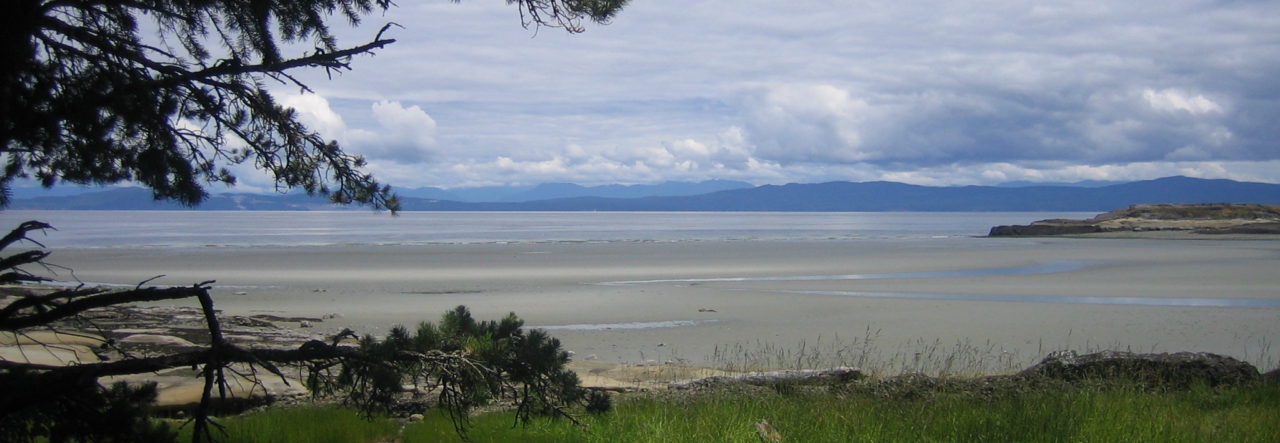My earlier post that referenced the weather mentioned that we had had the last rain of the Spring and so could reasonably expect no more water from the sky until September. Well, luckily I was wrong (we have droughts in the Summer that lead to water restrictions etc). We had a very cool and wet June but now the heat is back. The grass is yellow, and the leaves on the trees are a little more dusty yellow.
The interesting part of living on an island is that it doesn’t heat up like a large city, or in fact any place that doesn’t have temperate ocean cooling. To our south, the Straits of Juan de Fuca only warm up about 1 degree Celsius between Winter and Summer. But, on the other side of the peninsula, Saanich Inlet can warm up a lot. So, we see some pretty uneven temperatures across the area all at the same time. Here’s a snapshot:

Where I live is 9 degrees Celsius hotter than down in James Bay, and 7 hotter than downtown. Friends down in James Bay never need an air conditioner. Without one, even in my properly insulated house, it reaches 28 degrees Celsius before 4pm. So, if I were to merely look at the Weather Network, it’d be giving me some pretty erroneous data for my area.
Luckily, the site that I use is amazing. School-Based Weather Station Network has automatic weather observations systems (AWOS) on every school in the area and in fact, on the Island (and the surrounding Gulf Islands). This means that you can get really beautiful and useful weather mapping for planning your outings. The moderating influence of the water also means that the hotter places are in the Summer, the colder they are in the Winter. From a world creation perspective, this type of thing can add a lot of flavour and interest with certain areas being much hotter or cooler, with shrines or fortifications having to deal with significant differences in how they deal with the weather.

What you see on the news or local station may not reflect what you’ll see outside. It can be hotter, colder, windier. In some cases, on this side of an island called Race Rocks, there will be no fog. On the other side there will be thick, thick fog that lasts for a week and no one in the city is the wiser.
The picture of the large tree sticking out over a stream that you’ll occasionally see on the banner is taken by yours truly on the West Coast Trail 12 years ago and really illustrates the difference of micro-climates here. On the trail it never gets hot, just wet. There is no drying off in the Summer. The blue areas on the West Coast in the image above is where you find most of the old growth. It is a true rainforest and is stunning. Here it is again in normal size:

Those of us who go to sea, for our living or enjoyment, and those of us who wander into the wild, pay close attention to the vagaries of our coastal climate and it seems to make our home here a little more special than many think it (already) is.
